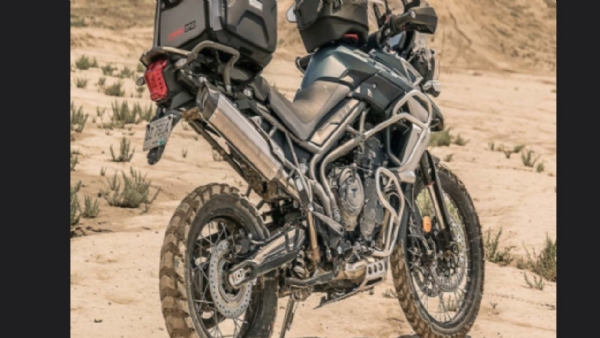Packing Your Bags For A Long Bike Journey – Tips & Tricks
If you’re going to travel to a different city on your bike, you’re going to need to pack your bags; now motorcycling luggage is a huge and vast spectrum of different products with each different type of luggage having its own separate benefits and sometimes problems as well.
Total Views |
Travelling somewhere far on two wheels can be enormous fun and there are also several practical benefits to it as well. Usually when most of us need to go to a different city for work, vacation or for any other purpose, we tend to prefer to take the bus, train, plane or drive there. Going by bike is something that is largely overlooked, but why? I believe it’s got something to do with the fact that people generally perceive long distance bike riding as being quite a tricky way of getting to places in addition to being something of an enthusiasts’ activity in itself. These two problems aren’t really problems if you think about it since if you have a correct riding technique you can make yourself really comfortable for hours and hours on the saddle and remember a bike is just another mode of transport, you really don’t need to start off as an enthusiast to begin using one beyond the confines of the city. I’ll write a separate article about starting off with long distance touring but for now I’ll get to the point of this article.

If you’re going to travel to a different city on your bike, you’re going to need to pack your bags; now motorcycling luggage is a huge and vast spectrum of different products with each different type of luggage having its own separate benefits and sometimes problems as well. Different people like to use different sorts of luggage depending on what bike they have, how much they’re willing to spend, how much stuff they need to take with them and obviously their own personal preference. Regardless of which sort of bag or box you use (separate article coming soon about that as well) there’s a few things you should keep in mind.
Always make a checklist of all the essentials that you absolutely cannot forget to take with you and tick off each item as you put it in your bag. It’s a simple system and it works great in ensuring nothing is left behind. These essentials may include but certainly aren’t limited to a first aid kit, plenty of water, plenty of food, change of clothes, sufficient money, all necessary vehicle papers as well as personal papers, toolkit for emergency repairs, mobile phone which is fully charged plus a power bank to keep it topped up, any required personal medications, a few empty plastic bags, puncture repair kit and a map is always good to carry in case you get lost somewhere where there’s little or no GPS signal. All this should be packed in addition to anything else you might need in a systematic way such that you know where everything is kept and items which have a higher possibility of being needed are placed in more easily accessible spots as compared to things you mostly won’t need till you reach your concerned destination.
_202202261128272929_H@@IGHT_0_W@@IDTH_600.png)
It's also a good idea to split all the cash you’re taking along and store small amounts in multiple places across your luggage as well as yourself. You never know what’ll happen outside the confines of your home town so it’s a great idea to have a few stores of backup cash stored in safe places in case things go south. Balance is also a critical aspect which can’t be ignored. A lot of biking specific luggage and even backpacks have portions which fall on the left and right side of the rider. This can be to a high degree as seen in tail bags or saddle bags (pictured above) or to a subtle degree as seen in any generic backpack. Weight of the luggage should be balanced as equally as possible across left and right sides and heavy luggage should be kept underneath the light luggage while at the same time considering the importance and immediate necessity of the items being placed. A tail bag can fall to one side if it’s imbalanced and a backpack can exert more strain on one shoulder than the other if there’s more load on one side, neither of which you really want when you’re spending long hours on the saddle.
Last but not least remember to overpack but leave a decent amount of empty space as well. Those might sound like opposing statements but they make sense if you really think about it. Pack a little more than you think you’ll need because it’s always best to prepare for the worst. Trust me there’s nothing worse than being parked at the side of a national highway regretting not bringing along more of a particular item. In addition to this, leave some room in your bags because chances are you’ll be bringing back more stuff than you went with. This again can be called a different kind of balance. There are certain more details and requirements to keep in mind but keep these essentials and your own learnings as the base and you’ll be able to build your own system of travelling on top of that for a smooth and seamless bike journey.
.
.
